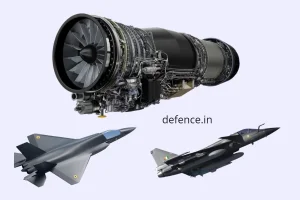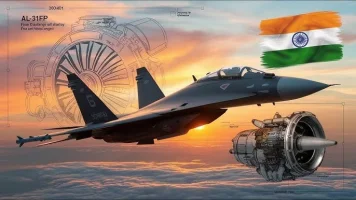- Views: 3K
- Replies: 22
The history of Indian military aviation includes the significant chapter of the HF-24 Marut, the nation's first domestically designed and built jet fighter. However, its journey was cut short when the decision was made to acquire the British-French SEPECAT Jaguar strike aircraft instead of pursuing upgrades for the Marut.
Recent reflections, including accounts from pilots who flew both aircraft, suggest that the imported Jaguar may have been less suited than the Marut for certain key operational tasks, particularly low-level strike missions, raising questions about historical procurement priorities.
The choice to favour the Jaguar over enhancing the Marut marked the conclusion of the HF-24 program. It reportedly also contributed to the resignation of its lead Indian designer, Dr. Raj Mahindra. This development effectively halted purely indigenous combat aircraft design in India for several decades until the advent of the Light Combat Aircraft (LCA) Tejas program.
This episode is often cited by analysts as an example of how potential long-term gains in domestic capability were sometimes overlooked in favour of readily available foreign technology, potentially hindering India's progress towards self-reliance in defence aviation.
Developed by Hindustan Aeronautics Limited (HAL), the HF-24 Marut project began in the late 1950s. Initially guided by famed German designer Dr. Kurt Tank and later led by Dr. Mahindra, the aircraft was envisioned as a versatile supersonic fighter capable of both attacking ground targets and engaging other aircraft.
The Marut, notable as the first jet fighter designed and produced in Asia outside the Soviet sphere, achieved its first flight in 1961 and officially entered service with the Indian Air Force (IAF) in 1964. Approximately 147 units were ultimately produced.
Despite the ambition behind its design, the Marut faced a critical hurdle: its engines lacked sufficient power. The aircraft was built around the Bristol Siddeley Orpheus 703 turbojet. Plans to integrate more powerful versions with afterburners did not materialize due to various international and commercial factors.
Consequently, the Marut could not reach its intended supersonic speeds, achieving a maximum speed of about Mach 0.95 (just below the speed of sound). Nonetheless, it earned respect as a durable and stable platform for low-altitude attack roles, demonstrating good handling and proving its mettle during the 1971 Indo-Pakistani War, especially in the western sector.
Recognizing the aircraft's inherent strengths despite the engine limitations, HAL and Dr. Mahindra proposed enhanced versions, the HF-71 and HF-72, during the 1970s. These designs aimed to overcome the Marut's deficiencies by incorporating more powerful engines, updated avionics, and improved weapon-carrying capabilities.
The HF-71 was planned as a specialized ground-attack aircraft, while the HF-72 sought to achieve supersonic flight through airframe modifications and afterburning engines. These proposed upgrades offered the possibility of developing the Marut into a more capable and adaptable combat aircraft suited to the IAF's future requirements.
However, the IAF's procurement of the SEPECAT Jaguar in the late 1970s effectively ended the Marut's development path. The Jaguar, chosen for its advanced navigation and attack systems, terrain-following radar, and precision strike capabilities, was selected to replace older aircraft types in the IAF inventory, including the Hawker Hunter, Canberra, and eventually the Marut itself.
Following this decision, plans were made to phase out the HF-24, and the HF-71/72 upgrade projects were consequently cancelled. The Jaguar went on to serve the IAF for decades, providing a significant deep-strike capability, and is only now nearing the end of its service life.
While the Jaguar brought significant technological advancements, perspectives from IAF pilots who operated both the Marut and the Jaguar offer a more complex comparison.
Some pilots reportedly found the Marut superior in the demanding low-level strike role. Despite its less powerful engines, the Marut was praised for its stability and predictable handling at very low altitudes, making it well-suited for operations over challenging terrain common along India's borders.
Conversely, while the Jaguar possessed sophisticated systems for navigation and targeting, some pilots felt it was less stable during low-level flight compared to the Marut. Its complexity also reportedly led to higher maintenance requirements. The Marut's simpler, rugged design was advantageous for operating from basic airfields and performing close air support or battlefield interdiction.
Retrospectively, some argue that the Marut's fundamentally sound airframe could have been upgraded with modern engines and systems, potentially offering a more cost-effective solution tailored specifically to India's operational environment than the imported alternative.
The story of the HF-24 Marut is often viewed as highlighting a recurring dilemma in India's defence procurement history. The decision to import the Jaguar, while providing immediate access to advanced capabilities, meant abandoning further development of a promising indigenous platform.
This reflects a broader historical pattern where importing foreign equipment has sometimes been prioritised over sustained investment in domestic research and development, arguably slowing the maturation of India's own defence industrial base – a challenge that current 'Atmanirbhar Bharat' initiatives aim to address.


